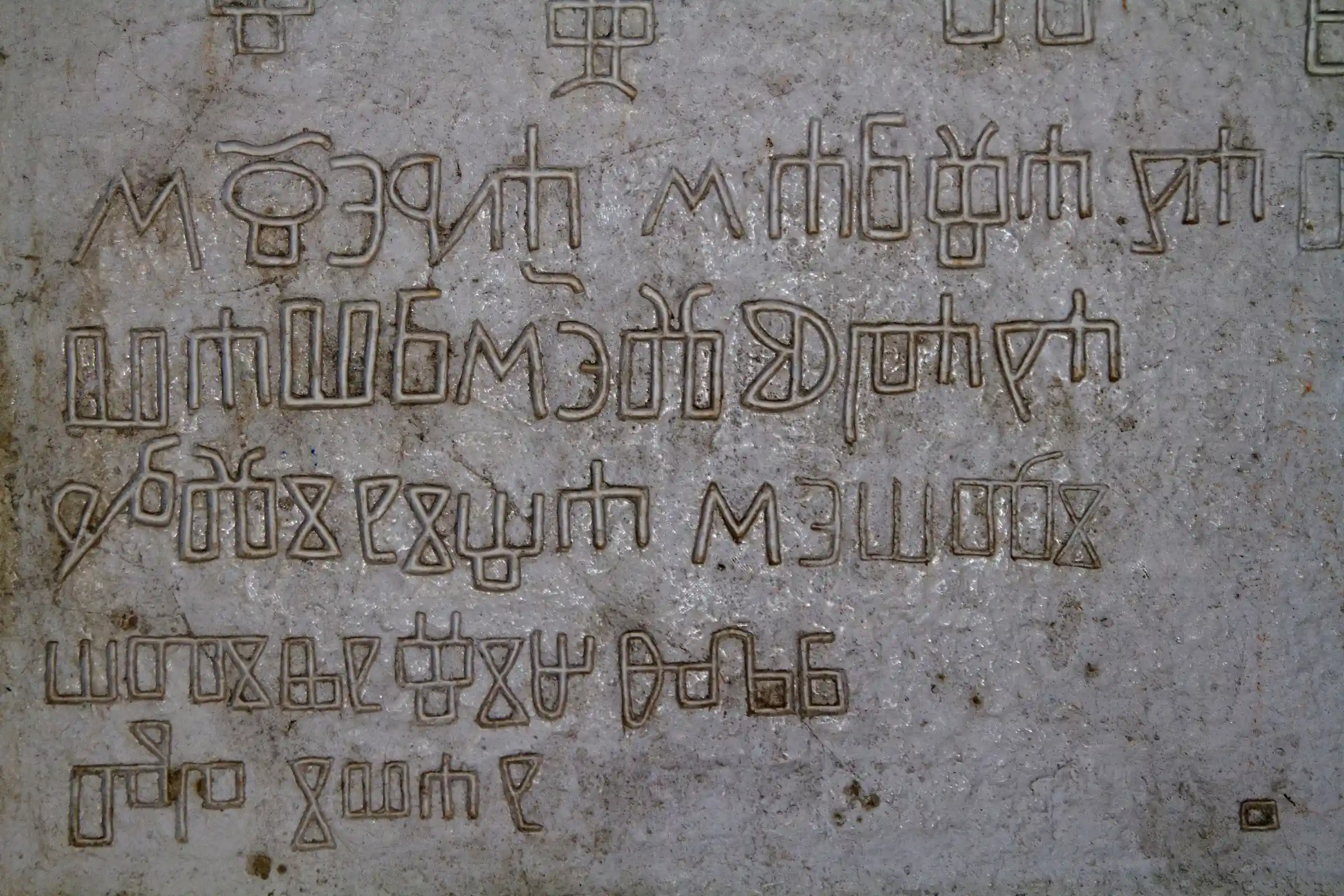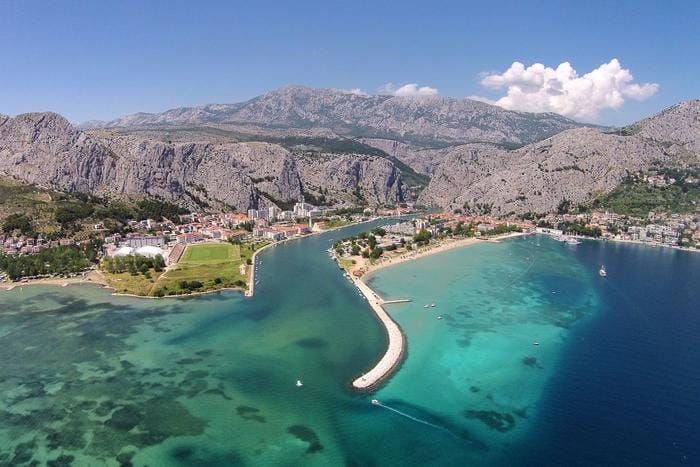
Yes, there are crowds in Croatia. And thank God they are.
October 28, 2025Hum, the smallest town in the world, sits on a hill amid the karst of Istria and has only around fifty residents according to the 2021 census (1). Although it covers just a few thousand square meters, this medieval gem has all the elements of a true town—from city gates and defensive walls to its own election of a mayor. Despite its size, Hum hides a rich history, cultural heritage, and one unexpected secret: Hum biska, a traditional brandy made from mistletoe and medicinal herbs.
Many visitors are surprised that such a small settlement has official town status. Hum was historically founded as a fortress and has preserved its structure within early medieval walls for centuries(1). Its Glagolitic heritage, unique frescoes, and the annual election of a mayor on “leto dan” confirm that cultural value often outweighs size. Read on to discover why Hum earned the title of the Smallest Town in Europe and why it should be part of your Istria itinerary.
Why Hum is called the smallest town in the world
How big is Hum?

Physically, Hum occupies an exceptionally small area. The walls enclose a space roughly 100 meters long and 35 meters wide(2), amounting to less than 3,500 square meters inside the ramparts. The western side of the town is formed by preserved defensive walls, while on the other sides the houses are literally built into the ramparts(1). Within this stone setting there are only two paved passages, about twenty houses, a town loggia, and a bell tower from 1552(1).
This strictly defined boundary has been preserved for more than nine centuries—since the 11th century, no new buildings have been erected outside the walls(2). That’s why many consider Hum a time capsule of urban life, giving you an insight into Istria’s layered past in just a few steps.
What makes it a town and not a village?
In most countries, towns are defined by their size and population, but in medieval Istria, town status was granted based on rights and infrastructure(3). Hum had city walls, gates, a bell tower, a parish church, and a loggia, and therefore gained town status despite its small population(2). It still preserves this tradition of administrative autonomy today: every June, men from the parish gather in the town loggia and elect a mayor “for a year and a day” by carving votes into a wooden tally stick called a raboš(5). Revived in 1977, this custom is considered one of Europe’s oldest democratic traditions and confirms that Hum is not a village but a town with its own institutions.
Population and area comparison
The 2021 census recorded 52 residents(1), a significant increase from 17 residents in 2001 and 30 in 2011(4). The demographic structure is balanced: 13 residents under 15, 24 of working age, and 15 over 65(4). Population density is about 4 people per square kilometer—dramatically less than the several thousand per km² in larger cities such as Zagreb(3). These figures make Hum almost unbelievable, while underscoring its appeal as a peaceful and authentic destination.
A walk through Hum’s history
First mention in 1102
Hum was first mentioned in 1102 in a deed by Margrave Ulrich II, where it was recorded as “Hulm”(1). The name likely developed from the Italian word colmo (summit) and evolved over the centuries into its current form. This early mention makes Hum one of the oldest continuously inhabited towns in the region.
Medieval fortifications and architecture
The settlement grew around a castle from the 11th century(1). In the 11th and 12th centuries, massive defensive walls were built and have survived to this day(1). A distinctive feature of Hum is that houses on three sides are built into the walls—a practical solution that protected residents and saved space(2). On the western side, the walls stand independently, and the whole complex is arranged along two parallel streets(1). A 22-meter bell tower, erected in 1552, rises above the town(1), while the town gate took on its current appearance in 1562(2).

At the highest point of the town, where the castle once stood, stands today the parish church of the Assumption of the Blessed Virgin Mary from 1802(1). The church features a Classicist façade and is richly adorned with silver and gilded liturgical objects(2). Outside the walls is the Romanesque chapel of St. Jerome (12th c.) with unique frescoes in the Byzantine style(1).
Roles of the Frankish state and Venice
Due to its strategic position, Hum changed rulers over the centuries. After the Frankish state, it passed to local Croatian nobles and was later taken over by the Patriarchs of Aquileia(1). In 1412, Venice conquered Hum and kept it under its rule for almost four centuries(1). During the Venetian period, the town acquired decorative elements characteristic of Venetian architecture. After the fall of the Venetian Republic in 1797, Hum came under Austrian rule and later became part of modern-day Croatia.
Cultural treasures hidden in Hum
Glagolitic Alley and its monuments
One of the greatest cultural attractions is the Glagolitic Alley—a seven-kilometer road connecting Roč and Hum. Academic Josip Bratulić conceived this “open-air museum,” and sculptor Želimir Janeš created 11 monumental monuments between 1977 and 1985(2). Each monument celebrates Glagolitic script, the oldest Slavic alphabet, and depicts significant people and events from Croatian history: the Pillar of the Chakavian Assembly, the Seat of Cyril and Methodius, the Overlook of Gregory of Nin, and the Gates of Hum as the final stop(3). Walking this alley offers a unique blend of history, art, and nature.
Frescoes of St. Jerome
Outside the walls lies the Romanesque church of St. Jerome from the 12th century(1). Inside are rare frescoes depicting the Last Supper, the Descent from the Cross, and the Burial of Christ(2). About 40 Glagolitic graffiti are carved into the walls, including the famous Hum inscription(1), confirming the town’s importance as a center of early Croatian literacy.
Parish church of the Assumption of Mary
The Baroque parish church from 1802(1) with five marble altars preserves valuable liturgical items and a painting by Italian artist Baldassare d’Anna from 1600(2). The church blends Late Gothic, Renaissance, and Baroque elements, making it a distinctive monument of sacred architecture.
Town loggia and the annual election of the mayor
Hum is known for a unique democratic tradition. Every year on Hum Day, the second Saturday in June, locals gather in front of the town loggia to elect a new mayor(5). Voting is done by carving each vote onto a wooden stick (raboš), and the tally of notches determines the winner(5). Documented in archives and revived in 1977, this custom symbolizes the community’s autonomy and solidarity.
Lapidarium and Glagolitic inscriptions
Hum was one of the main centers of Glagolitic literacy until the early 19th century. The lapidarium in the town center displays three stone inscriptions in Glagolitic script(2). In addition, eight other known Glagolitic inscriptions appear on paper, bells, and stone slabs(1). These monuments testify to the high level of culture and literacy maintained by this small town over the centuries.

The secret of Hum biska
What is biska and how is it made?
Biska is a traditional Istrian brandy made from homemade pomace brandy, white mistletoe, and four kinds of medicinal herbs(2). By mixing the ingredients and macerating them for several months, it becomes an amber-colored drink with a rich flavor. In Hum, the recipe has been preserved for generations and passed down orally.
Celtic origin of the recipe
According to tradition, the recipe for biska is about 2,000 years old and comes from Celtic druids(2). The Celts considered white mistletoe a sacred plant and used it in rituals to prepare drinks that grant strength, courage, and health(2). This deep historical thread links Hum’s brandies with ancient beliefs and gives them a special mystique.
Healing properties and cultural significance
Besides being an aperitif, biska is also used as a natural remedy for atherosclerosis and blood pressure regulation(2). In 2005, Hum was proclaimed the “Town of Biska”(2), confirming the importance of this brandy to local identity. The original recipe was preserved by parish priest Josip Vidal, a renowned herbalist, and biska has become a symbol of tradition and community.
Where to taste authentic biska
You can taste authentic Hum biska at the Humska konoba restaurant, where visitors can help themselves to brandy from wooden barrels(2). Every October, Hum hosts the Istrian Brandy Festival, where brandies from across Istria are presented. Visitors can sample biska, honey brandy, rue brandy, St. John’s wort brandy, and many other flavored spirits(2) and enjoy a lively gathering in the square(6).
Conclusion
Despite its modest size, Hum offers an exceptionally rich experience. The smallest town in the world is not just a tourist curiosity but living testimony to Croatian history and tradition. Medieval walls, Glagolitic inscriptions, the mayoral election, and the legend of biska create an atmosphere that enchants every visitor. History lovers will be delighted by the well-preserved architecture and monuments, while foodies can discover Istrian flavors through biska, maneštra, and fuži.
If you want to experience authentic Istria and stroll streets where time has stood still, Hum is the ideal destination. Make time to visit the Glagolitic Alley, taste Hum biska, and take part in its unique traditions. Find accommodation in Hum or nearby and immerse yourself in the quietest story Croatia has to tell. This hidden gem proves that size is not what defines the size of the experience.
References
1. Istrapedia – Hum
2. Expat In Croatia – Hum, Croatia: The smallest city in the world
3. Eurotours Villas – Is it true that Hum, Istria is the smallest town in the world?
4. Wikipedia – Hum, Istria County
5. Kulturistra – Hum Day – Election of a mayor for a year and a day
6. Taste of Croatia – Hum: Festival of homemade brandy


